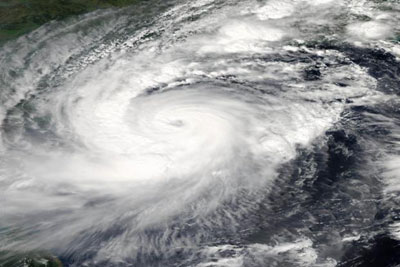By FnF Correspondent | PUBLISHED: 26, Feb 2015, 11:41 am IST | UPDATED: 27, Feb 2015, 17:37 pm IST

NY: A UN report says "timely and massive evacuation saved lives" during Cyclone Hudhud that slammed coastal Andhra Pradesh and Odisha last October, leaving only 41 dead in a disaster of that magnitude.
Overall, major disasters last year cost India 1,322 lives and $27 billion in damages, the UN Economic and Social Commission for Asia and Pacific report released here Wednesday said.
It put the death toll from the September floods in Kashmir at 1,281 and the economic loses at $16 billion, and the material losses from the category 4 Cyclone Hudhud at $11 billion.
"One important lesson from 2014 is that end-to-end early warning systems save lives," said Shamika Sirimanne, director of ESCAP's Information and Communications Technology and Disaster Risk Reduction Division.
"The successful preparation for Cyclone Hudhud and Typhoon Hagupit (in the Philippines last December) lies not only in the ability to predict the movement and intensity of storms, but also the capacity to engage and mobilize vulnerable communities in disaster preparedness."
Crowdsourcing using smart phones and Android apps helped assess the damage from the cyclone, the report said.
"With the increasing penetration of smartphone, crowdsourcing is emerging as an important tool to collect primary data for post-disaster damage assessment," it said.
Overall last year, 119 natural disasters -- over half of the world's 226 -- struck the Asia and Pacific region, which escaped a catastrophic earthquake or tsuanami.
The report reviewing last year's natural disasters detailed the official efforts that helped reduce fatalities during Cuclone Hudhud.
"The National Disaster Response Force deployed 35 teams across the states of Andhra Pradesh and Odisha," the report said. "A day before the landfall district official were seen along the coast and seashore villages evacuating villagers to cyclone shelters. Reports have circulated regarding officials personally knocking on doors to notify residents of impending danger."
As a result of these efforts, 500,000 people were moved to safety, while an airport, a naval base, industries and infrastructure were destroyed.
The reported noted that the destruction of casaurina plantations and mangrove along the coast and deforestation on the hills resulted in damage to Vishakapatnam city. It also recommended introducing and enforcing building codes so that structures can withstand high velocity winds.
The review said that floods were increasingly occurring across borders and international cooperation was required to deal with them. It cited the cooperation between India and Nepal during the landslide in August that blocked the Sun Koshi River creating an artificial lake. It threatened flash floods across the border in India. The two nations acted jointly to evacuate people at risk.

by : Priti Prakash
When Russian President Vladimir Putin landed in New Delhi for the 23rd India–Russia Annual Summit ...